 I have wonderful memories of playing cards as a young child. I was captivated as a 4-year-old when I first learned to play Fish. The way my older cousin shuffled the deck seemed like magic. And then there was the overwhelming anticipation followed by horror if I unknowingly selected the Old Maid from the person next to me. I couldn’t get rid of her fast enough. Whether you have preschoolers or teens at home, here are 6 simple card games that everybody loves .
I have wonderful memories of playing cards as a young child. I was captivated as a 4-year-old when I first learned to play Fish. The way my older cousin shuffled the deck seemed like magic. And then there was the overwhelming anticipation followed by horror if I unknowingly selected the Old Maid from the person next to me. I couldn’t get rid of her fast enough. Whether you have preschoolers or teens at home, here are 6 simple card games that everybody loves .
OLD MAID
Prep a standard deck of cards by removing one queen card and shuffling the deck. Deal out all the cards to all the players until there are none left. Players remove the pairs in their hands. The dealer fans out his cards in his hands and offers his hand to the player on his left. That player selects one and adds it to her own hand. Any matches are removed. The process continues around and around the circle until everything is paired up except the queen. Whoever is left with it at the end of the game is the Old Maid!
GO FISH
The goal here is to get four of a kind. Deal out seven cards to each player. If you have seven or more players, use five cards a piece. Put the remaining cards in a deck in the center. Player 1 picks any other player to ask if he has the card she’s looking for – e.g., “Do you have any threes?” Hand over the cards if you’ve got them or tell the person to “Go Fish” for a card in the pile. As soon as you find four of a kind, put them face up on the table. Whoever runs out of cards first is the winner.

WAR
This game of luck can be totally addictive for kids. Divide the deck evenly among the two players. Each player turns over the top card on her deck at the same time. Whoever has the higher card takes both cards and puts them at the bottom of her stack. If the cards are the same, then it’s war! Each player counts out three cards (face down) and the next card is shown. Whoever has the higher card wins all the cards.
UNO /CRAZY EIGHTS
This game, played with UNO cards or a standard pack of playing cards, has one goofy twist: eights rule! Deal seven cards out to each person in a two-player game, or five cards for games with three or four players. The remaining cards go in a draw pile, and one card is turned over to start the play pile. The player to the dealer’s left must match the card’s number or suit from the face-up pile. A player who does not have a match may play an eight and change the suit to anything they wish. A player who has neither a match nor an eight must draw until he gets a card that can be played. The first to discard all their cards wins.
CONCENTRATION
Turn a standard deck of cards into a game of concentration. Shuffle the deck, laying the cards out in rows, and hunting for “matches” of the red kings, black threes, and so forth. For little ones, use just the two red suits for a more manageable set.
FOREHEAD POKER
This is a fun, super simple two-player game for the small fries. Place the deck between you and your child. Each of you grabs a card without peaking at it and places it on your forehead so that your opponent can see it, but you can’t. Have your little one guess if their own card is higher or lower than yours. If they’re right, they take the pair. If they’re wrong, it’s yours. Take turns and work your way through the deck. The person with the most cards at the end is the winner.

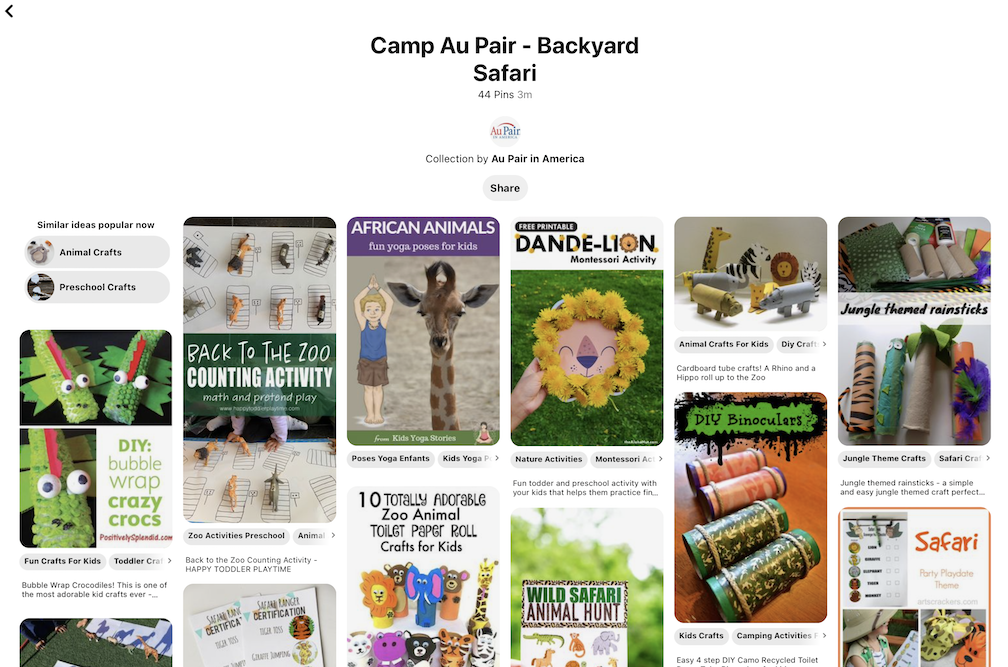

 Next week’s Camp Au Pair theme is
Next week’s Camp Au Pair theme is 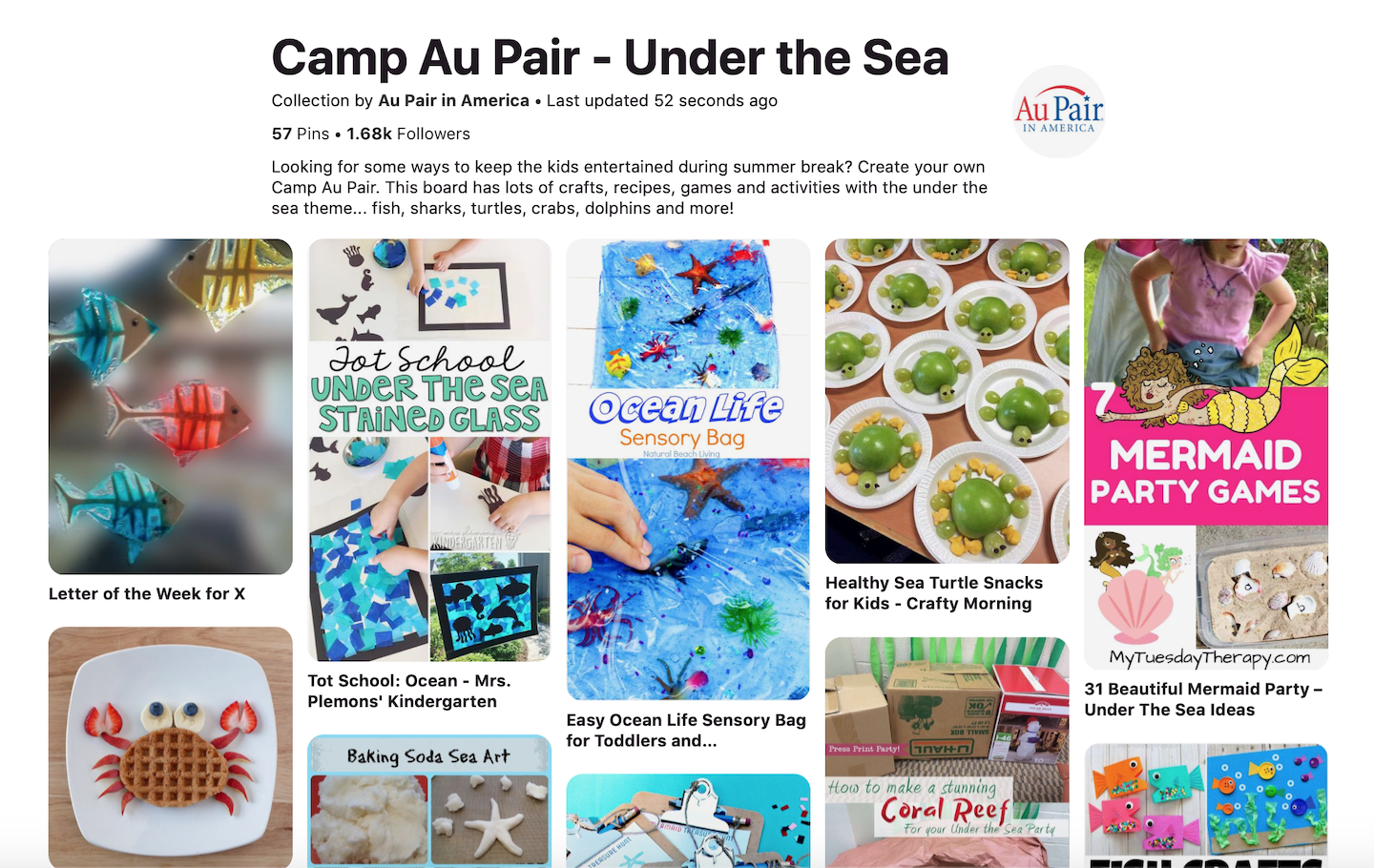






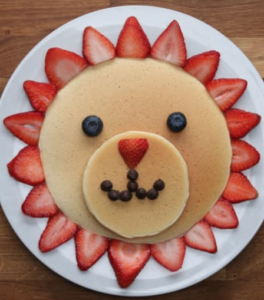
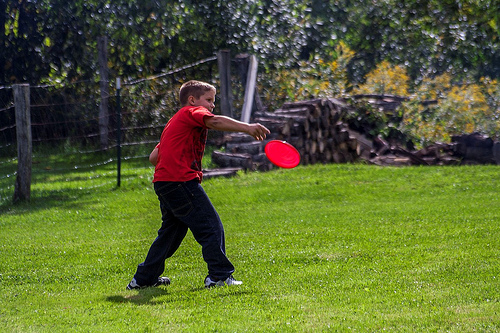
 n the ages of your children, decide if a simple or more labor intensive project is in order.
n the ages of your children, decide if a simple or more labor intensive project is in order. Conversely select an aluminum pie pan or plastic take-away tray and fill it with water. Arrange cranberries, pine boughs and sliced oranges then freeze. If you wish to make a hole in the ice to hang your creation, heat the tip of a skewer and carefully push it though the ice before suspending outside.
Conversely select an aluminum pie pan or plastic take-away tray and fill it with water. Arrange cranberries, pine boughs and sliced oranges then freeze. If you wish to make a hole in the ice to hang your creation, heat the tip of a skewer and carefully push it though the ice before suspending outside. Finally try filling a bucket or large container with water. Carefully tape a mason jar down to displace the water (or alternatively try using a bundt pan) and freeze. Once solid, remove the containers and add a candle or small light and enjoy! More detailed instructions can be found
Finally try filling a bucket or large container with water. Carefully tape a mason jar down to displace the water (or alternatively try using a bundt pan) and freeze. Once solid, remove the containers and add a candle or small light and enjoy! More detailed instructions can be found  I have wonderful memories of playing cards as a young child. I was captivated as a 4-year-old when I first learned to play Fish. The way my older cousin shuffled the deck seemed like magic. And then there was the overwhelming anticipation followed by horror if I unknowingly selected the Old Maid from the person next to me. I couldn’t get rid of her fast enough. Whether you have preschoolers or teens at home, here are 6 simple card games that everybody loves .
I have wonderful memories of playing cards as a young child. I was captivated as a 4-year-old when I first learned to play Fish. The way my older cousin shuffled the deck seemed like magic. And then there was the overwhelming anticipation followed by horror if I unknowingly selected the Old Maid from the person next to me. I couldn’t get rid of her fast enough. Whether you have preschoolers or teens at home, here are 6 simple card games that everybody loves .
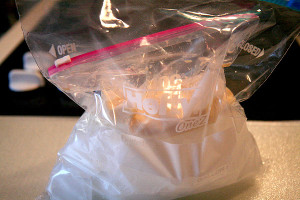 In a quart size zipper baggie, combine…
In a quart size zipper baggie, combine…